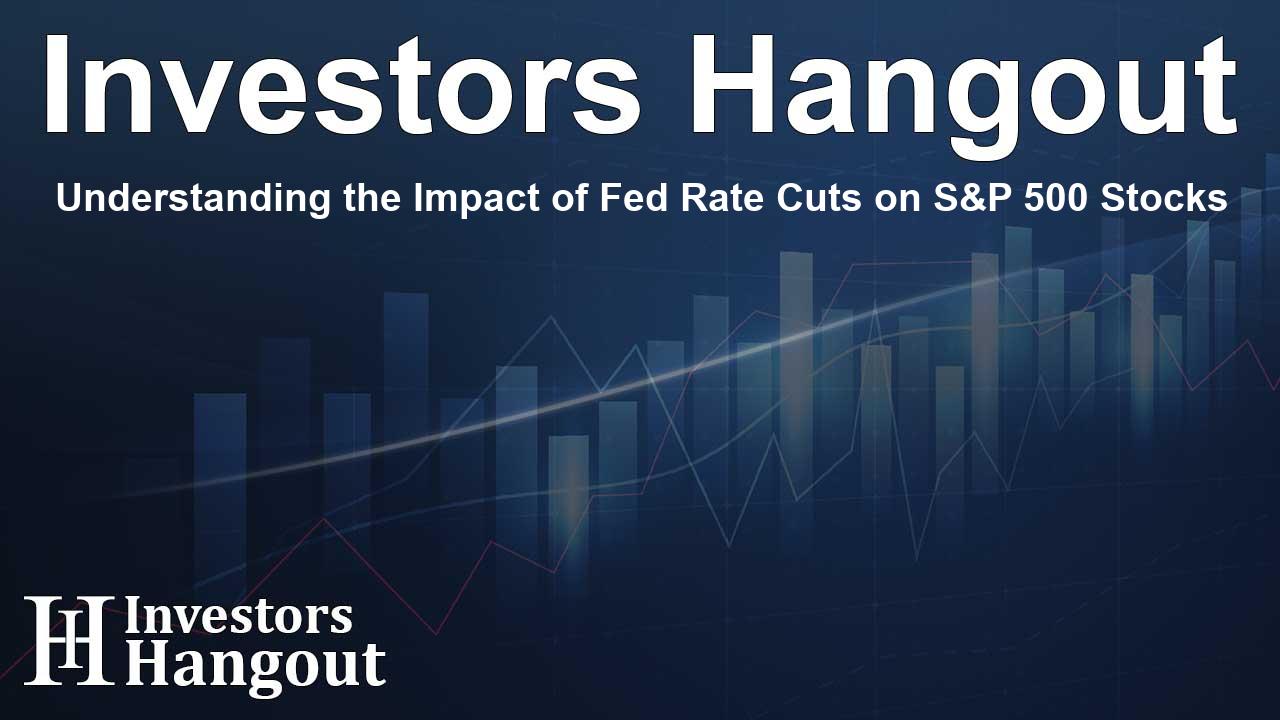Understanding the Impact of Fed Rate Cuts on S&P 500 Stocks

Preparing for Federal Rate Cuts and Their Impact on the Market
As investors gear up for the upcoming interest rate decision from the Federal Open Market Committee (FOMC), the market is filled with anticipation. The possibility of the federal funds rate being cut for the first time in years has sparked numerous questions among both investors and analysts.
Market Outlook and Expectations for Rate Cuts
The sentiments in the market appear to be split regarding the potential size of the rate cut anticipated. Recent analyses suggest that traders see a 59% likelihood of the Fed pursuing a significant 50-basis-point cut. In contrast, there’s a 41% chance for a smaller cut of 25 basis points. The distinction between these options could greatly influence market dynamics and affect investor confidence.
The Consequences of a Larger Rate Cut
If the Fed chooses to enact a more substantial 50-basis-point cut, it might indicate that current interest rates are excessively high. Such a move could lead to a rise in risk appetite among investors, potentially pushing stock prices higher as optimism regarding economic growth grows.
The Impact of a Smaller Rate Cut
Conversely, if the Federal Reserve opts for a more cautious 25-basis-point reduction, some investors could feel let down. This disappointment might stem from their hopes for a more significant cut aimed at boosting economic growth. In this case, the market's reaction could be less pronounced compared to a more aggressive cut.
Stock Reactions During Previous Rate Cuts
Historical data reveals that the S&P 500, tracked by the SPDR S&P 500 ETF Trust (SPY), often experiences noticeable reactions to FOMC decisions. Since early 2022, the S&P 500 has shown an average movement of around 1.3% during these critical FOMC announcements. This heightened sensitivity emphasizes the significance of such news in the financial markets.
Examining Key S&P 500 Stocks
Analysts from Goldman Sachs, including contributions from analyst John Marshall, have examined stock movements in relation to past rate cuts. Over the last three rate-cutting cycles in September 2007, July 2019, and March 2020, they analyzed key S&P 500 stocks with liquid options, uncovering notable market trends.
Key Stocks to Keep an Eye On
During periods of FOMC activity, the following stocks tend to exhibit more significant movements:
- Caesars Entertainment Inc (CZR): This company leads with an average movement of 5.9% during rate cut events, showing strong sensitivity to changes in monetary policy.
- Nvidia Corp (NVDA): Following closely, Nvidia reflects an average shift of 5.5%, highlighting its volatility and high interest from investors.
- Capital One Financial Corp (COF): With an average movement of 4.6%, this banking institution is particularly responsive to interest rate changes that impact lending.
- Charles Schwab Corp (SCHW): Also undergoing a 4.6% average change, Schwab's performance underscores its significance in the financial industry as rates fluctuate.
- Mastercard Inc (MA): This payments company records a 4.5% average movement, reflecting its exposure to economic situations swayed by interest rates.
- Fortinet Inc (FTNT): With a focus on security, Fortinet averages a 4.3% change during these volatile periods, showing the sector's sensitivity to economic policies.
- Marriott International (MAR): Representing the hospitality sector, Marriott sees an average move of 4.2%, highlighting its sensitivity to borrowing costs.
- American Express Co (AXP): AXP mirrors market shifts with an average movement of 3.8%, illustrating its connection to consumer spending patterns.
- Newmont Corp (NEM): In the commodities sector, Newmont has an average shift of 3.7%, showcasing the mining industry’s ties to economic sentiment.
- Deere & Co (DE): This industrial giant shows a 3.6% average movement, demonstrating how manufacturing can be influenced by monetary policy.
- BlackRock Inc (BLK): Average movements of 3.6% indicate how asset managers respond to rate changes and shifting investment flows.
- Texas Instruments Inc (TXN): As a tech leader, TXN averages a 3.5% movement, reflecting its important role in economic cycles.
- 3M Co (MMM): With a 3.3% average change, 3M's performance highlights reactions within the diversified industrial sector.
- Bank of America Corp (BAC): This banking powerhouse sees an average shift of 3.2%, emphasizing its responsiveness to rate changes.
- JPMorgan Chase & Co (JPM): Another major bank, JPM displays a 3.2% movement, further underscoring the banking sector's relevance.
- Oracle Corp (ORCL): This tech company maintains an average move of 3.0%, showcasing how the industry adapts to fluctuating economic conditions.
- Abbott Laboratories (ABT): Also averaging a 3.0% shift, Abbott demonstrates how healthcare is interlinked with economic policies.
- Starbucks Corp (SBUX): This global coffee giant reflects consumer confidence, averaging a 2.9% change during uncertain market times.
- Visa Inc (V): Visa shows an average movement of 2.7%, reinforcing the connection between consumer credit and interest rate decisions.
- Verizon Communications Inc (VZ): Finally, Verizon sees a 2.3% change, illustrating the telecommunications sector’s relationship with economic shifts.
Frequently Asked Questions
What are Federal Reserve interest rate decisions?
The Federal Reserve makes decisions regarding interest rates to influence the economy, targeting growth, inflation, and employment levels.
How do these rate cuts affect the stock market?
Rate cuts generally lower borrowing costs, which can encourage spending and investment, resulting in stock price increases.
Which stocks typically react most to rate cuts?
Stocks in sectors such as finance, technology, and consumer discretionary often show the most volatility during rate cuts.
What historical data is available on stock movements during rate cuts?
Historical analyses exhibit notable average shifts in stock prices during past FOMC rate decisions, with certain stocks consistently outperforming others.
How can investors prepare for such decisions?
Investors should monitor economic indicators, market sentiment, and potential reactions of stocks historically linked to interest rate changes.
About The Author
Contact Addison Perry privately here. Or send an email with ATTN: Addison Perry as the subject to contact@investorshangout.com.
About Investors Hangout
Investors Hangout is a leading online stock forum for financial discussion and learning, offering a wide range of free tools and resources. It draws in traders of all levels, who exchange market knowledge, investigate trading tactics, and keep an eye on industry developments in real time. Featuring financial articles, stock message boards, quotes, charts, company profiles, and live news updates. Through cooperative learning and a wealth of informational resources, it helps users from novices creating their first portfolios to experts honing their techniques. Join Investors Hangout today: https://investorshangout.com/
The content of this article is based on factual, publicly available information and does not represent legal, financial, or investment advice. Investors Hangout does not offer financial advice, and the author is not a licensed financial advisor. Consult a qualified advisor before making any financial or investment decisions based on this article. This article should not be considered advice to purchase, sell, or hold any securities or other investments. If any of the material provided here is inaccurate, please contact us for corrections.
